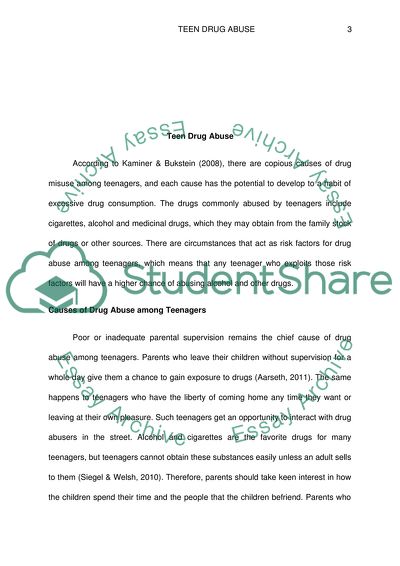Cite this document
(Teen Drug Abuse Research Paper Example | Topics and Well Written Essays - 1500 words, n.d.)
Teen Drug Abuse Research Paper Example | Topics and Well Written Essays - 1500 words. Retrieved from https://studentshare.org/social-science/1771075-teen-drug-abuse
Teen Drug Abuse Research Paper Example | Topics and Well Written Essays - 1500 words. Retrieved from https://studentshare.org/social-science/1771075-teen-drug-abuse
(Teen Drug Abuse Research Paper Example | Topics and Well Written Essays - 1500 Words)
Teen Drug Abuse Research Paper Example | Topics and Well Written Essays - 1500 Words. https://studentshare.org/social-science/1771075-teen-drug-abuse.
Teen Drug Abuse Research Paper Example | Topics and Well Written Essays - 1500 Words. https://studentshare.org/social-science/1771075-teen-drug-abuse.
“Teen Drug Abuse Research Paper Example | Topics and Well Written Essays - 1500 Words”, n.d. https://studentshare.org/social-science/1771075-teen-drug-abuse.


